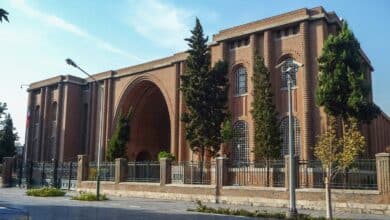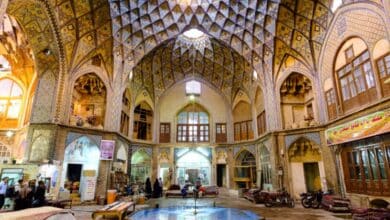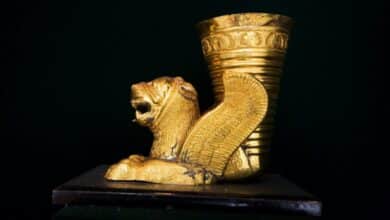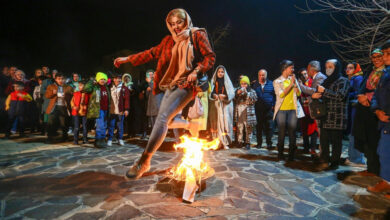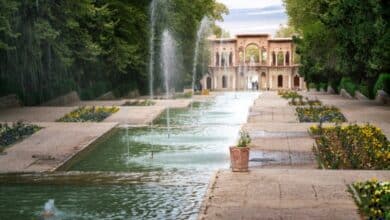
Persian Gardens are famous for their unique architecture, some of which date back thousands of years. They are built based on the four elements of Zoroastrianism: sky, earth, water and plants, which is why they are considered a symbol of paradise. Interestingly, Iranian gardens, which have their roots in the Achaemenid era, have had a significant influence on the construction of gardens around the world, such as those in India and Spain. It is worth mentioning that 9 Iranian gardens were inscribed as tangible cultural heritage of Iranians by UNESCO in 2011. Let’s explore these gardens further.
Contents
Common Features in Persian gardens
Some general features that can be observed in the design of Persian gardens include:
– The observance of principles of symmetry and centrality, especially in the construction of pavilions along the main axis.
– The observance of hierarchy based on functionality.
– The observance of rhythm, which is more evident in the construction of chambers.
The architectural structure of the gardens is divided into four equal sections, each garden typically contains a fountain, a pool or basin, a garden, and a pavilion.
Now, let’s introduce the 9 Persian gardens registered by UNESCO.
1. The royal garden (Bagh-e Shahi)

The royal garden, also known as Bagh-e Shahi or the Paradise of Cyrus, is a beautiful garden located in Pasargadae, Marvdasht, Iran. It is recognized as the mother of Persian gardens due to its architecture and elements. The garden and its tree layout were created by the order of Cyrus the Great. The garden was irrigated through the Polvar River, and water was transferred to the garden through stone channels and concrete pools. Currently, only 1100 meters of the garden’s channels have been unearthed.
2. Eram Garden
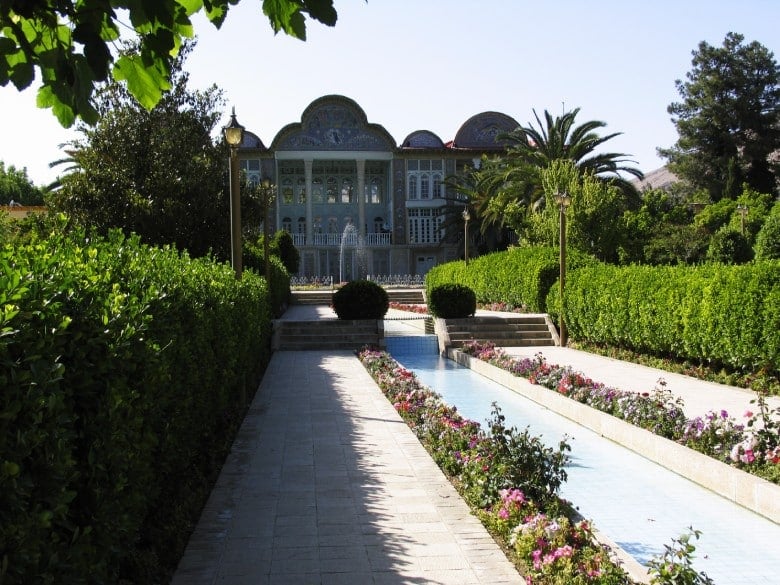
Eram Garden is a stunning garden with fruit trees, magnificent cypress trees, and beautiful plants. These trees are located on both sides of a beautiful stream within the garden. It is interesting to know that this garden is also called Shiraz Botanical Garden.
The architecture of this garden is inspired by the Qajar period. There is a beautiful building located in the center of the garden, and according to research, its design is influenced by the architecture of Persepolis. exquisite tilework, plasterwork and beautiful paintings, which include images of Qajar kings and Iranian literary myths and religious stories, can be seen outside and inside the building.
3. Shazdeh Mahan Garden
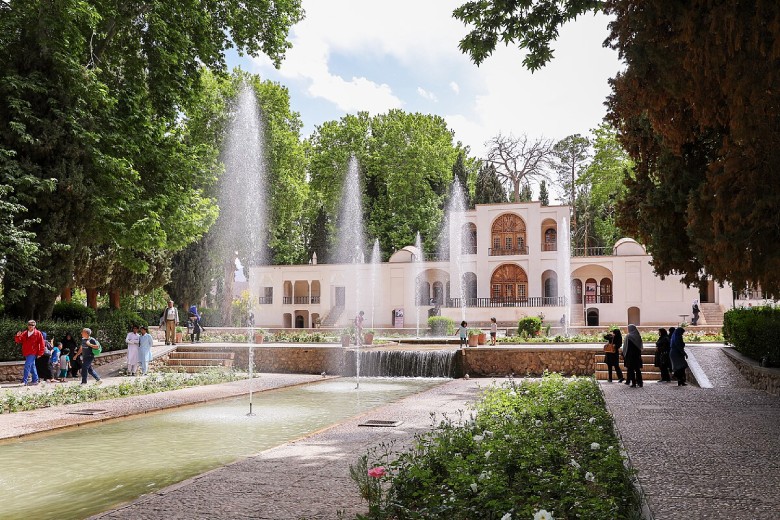
Shazdeh Mahan Garden, also known as Bagh-e Shazdeh, is one of the most magnificent traditional gardens in Iran. although this garden is located in the heart of the desert, it benefits from fertile soil and mild climate.
In the past, it served as a resting place for caravans. This garden has an entrance portal, a bathhouse, an irrigation system, and a pool, and it still has access to the qanat (underground canal).
4. Chehel Sotoun Garden

This garden was originally known as Jahan Nama Palace. It is located in Isfahan and spans an area of over 67,000 square meters. The reason for the name Chehel Sotoun (40 columns) can be the reflection of the twenty columns from the Hall in the opposite pond. Another reason could be the large number of columns, and given that the number forty represents abundance for Iranians, this name was chosen for it.
The garden features massive columns, elegant halls with tilework and mirrorwork, twenty-column halls, a Hall of Mirrors, and a pool with stone lion sculptures on all four sides. The decorations include miniatures of the Ganjineh room and an interior view depicting Shah Abbas I wearing a magnificent crown.
5. Fin Garden

Fin Garden is a splendid historical garden in Fin, Kashan. It has a central courtyard and a building at the end of the central courtyard. The water supply system in this garden is fascinating and unique, established during the Qajar period. The water is supplied to this garden through the Soleymaniye Qanat and is transferred to various sections, including the boiling pool. The boiling pool has 160 potholes, with 80 potholes simultaneously boiling water, while the remaining 80 potholes transfer water through clay pipes to the main pool, which features twelve fountains.
6. Dowlat Abad Garden
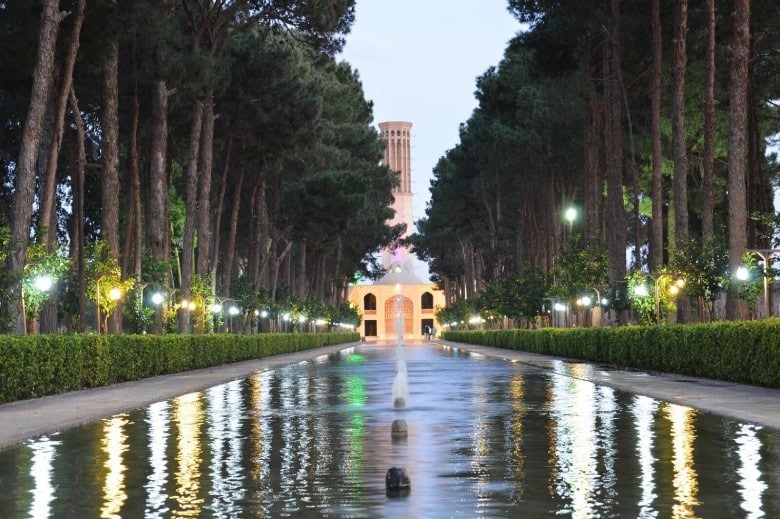
Dowlat Abad Garden, also known as the Windcatcher Garden, is located in Yazd, Iran. It was built during the Zand dynasty. In this garden, you can see pine and cypress trees, as well as fruit trees such as grapes and pomegranates. The garden is divided into different sections, including the Octagonal Pavilion and Windcatcher, the Mirror Hall Mansion, the Paradise Mansion, the Main Entrance Mansion, and the South Entrance Mansion. The Octagonal Pavilion features an interesting system with a combination of ventilation and water passing through the garden, which has helped to create a pleasant garden climate. It’s worth noting that the tallest adobe windcatcher in the world, standing at 33 meters, is located in this garden.
7. Abbas Abad Garden
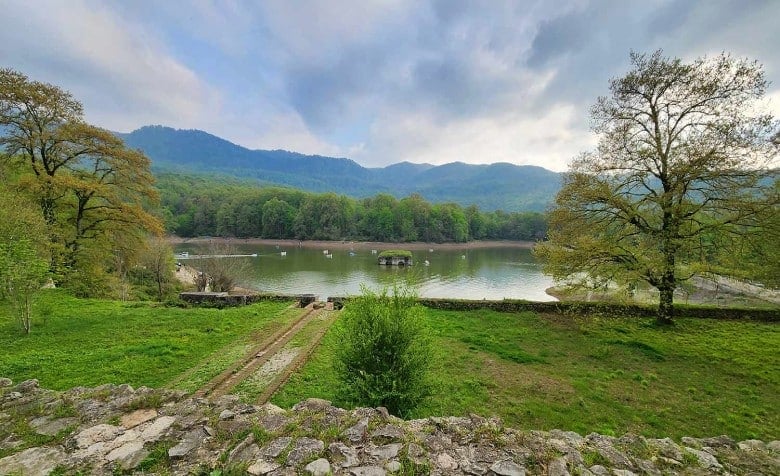
Abbas Abad Garden is located in Mazandaran province and is an example of non-desert gardens in Iran. It has a lake with a building in its midst, which adds to the beauty of the garden. The garden was built during the Safavid era, and its interesting features include its staircase design and three levels. The garden also contains various attractive sections, such as observation towers, the northern and southern regions, the dam and water flow control tower, pottery workshops, and more, which you can explore.
8. Akbarieh Garden
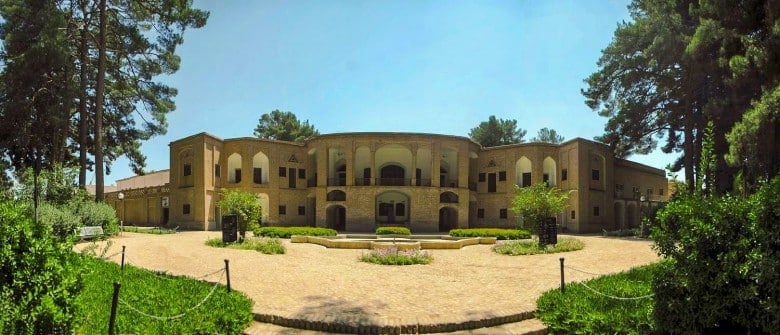
Akbarieh Garden is situated in the village of Akbarieh in Birjand. It features 150-year-old pine trees and orchards with willows. Interestingly, this garden had both residential and governmental sections. Some of the mansions served as the residence of the minister’s family during the Qajar period, while others were dedicated to administrative and governmental affairs. The design of this garden was inspired by Turkish and Russian architecture and then combined with Islamic architecture.
9. Pahlavanpour Garden
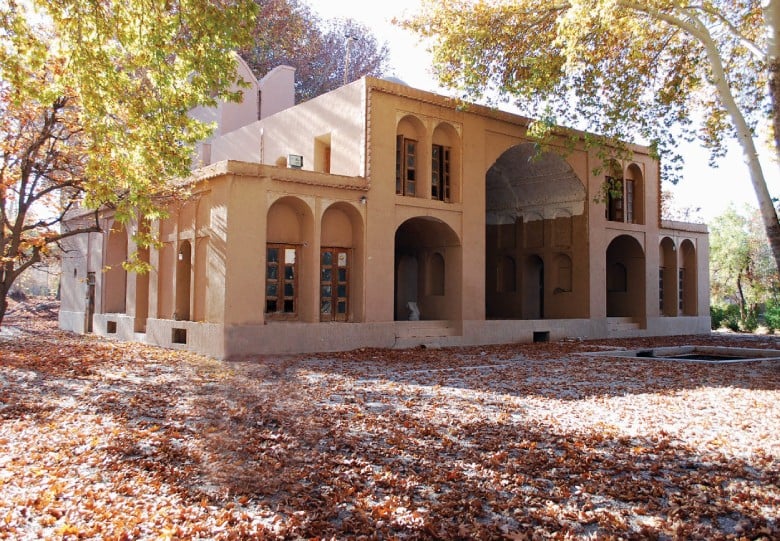
Pahlavanpour Garden is located in Yazd province and is one of the most beautiful contemporary gardens in Iran, dating back to the Qajar period. The garden has various sections, including a protective tower, a central pavilion, a kitchen, a treasure bath, and more. It is interesting to know that this garden is now also used as a hotel.
Book Iran Flights
Buy Iran flight tickets at the lowest price
Explore Iran’s culture and history with affordable and reliable flight tickets.
Wrap it up
In this article, we have attempted to provide a more comprehensive introduction of 9 Registered Persian Gardens in UNESCO. Each garden has its own unique characteristics and is located in different areas. Depending on your interests, you can travel to any desired region of Iran and visit its natural and historical attractions.
We look forward to meeting you in Iran.
FAQs
How many Persian gardens are registered in UNESCO?
Nine persian gardens were registered in UNESCO’s World Heritage List in 2011.
What are the 9 registered Iranian gardens in UNESCO’s?
The nine registered persian gardens are Pasargadae in Marvdasht, Eram in Shiraz, Chehel Sotoun in Isfahan, Fin in Kashan, Abbas Abad in Mazandaran, Dowlat Abad in Yazd, Shazdeh Garden in Mahan Pahlavanpour in Yazd, and Akbarieh in Birjand.
What are the characteristics of persian gardens architecture?
The general architectural features of Iranian gardens include principles of symmetry, centrality, hierarchy, and rhythm. The garden structures are often divided into four equal parts, each garden containing a fountain, a pool, a garden, and a pavilion.


